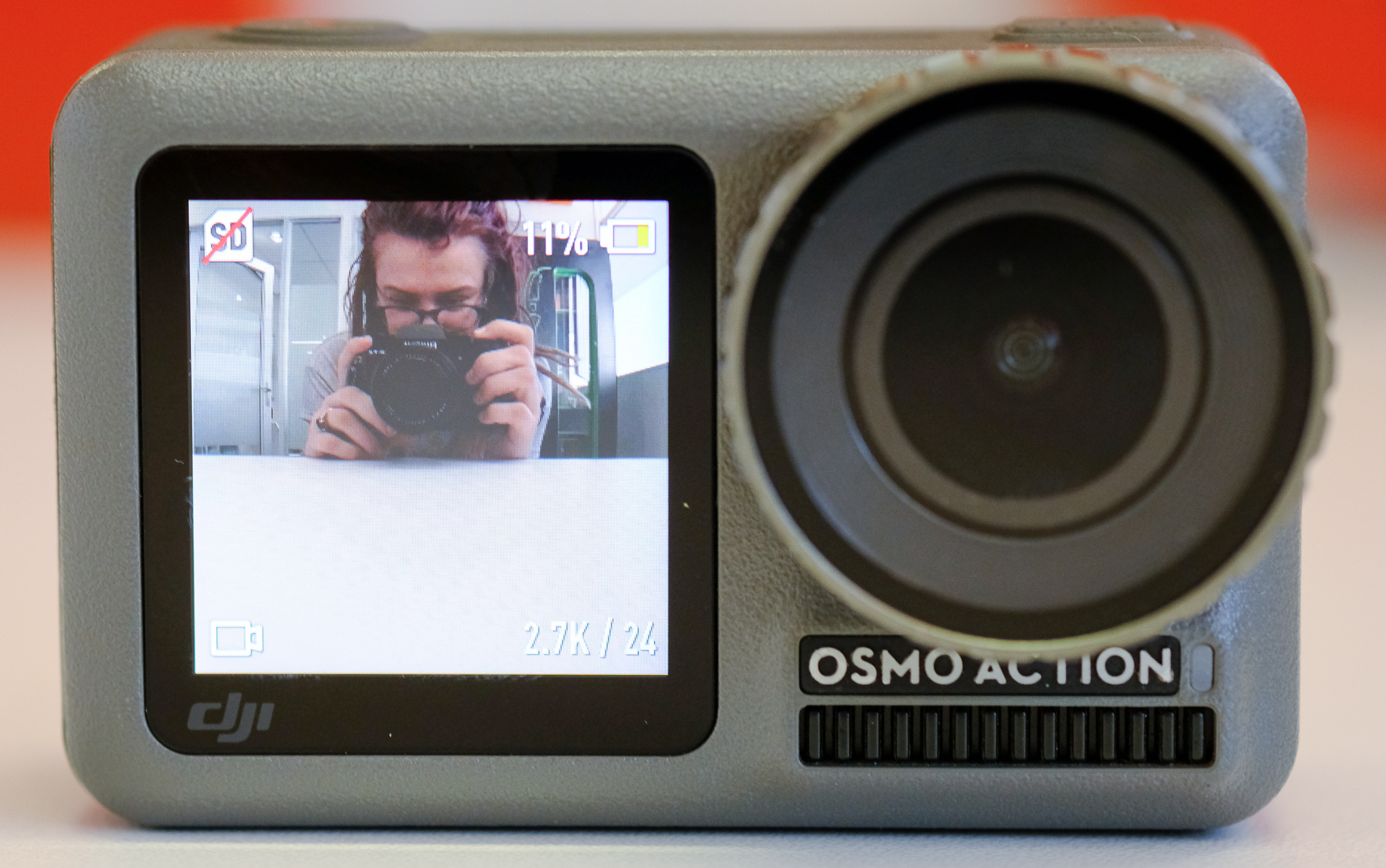We know what you’re thinking — DJI isn’t necessarily known for its action cams. We know its drones and gimbals. Y’know? Stabilisation tech. Know what else uses stabilisation tech? Action cams…
Which is why DJI released its first action cam, the Osmo Action into the world. We’ll even go as far as saying it’s a real GoPro competitor that takes a steady shot at dethroning the Hero7 Black. It packs familiar design — something you’ll be used to if you’ve ever used a GoPro, comparable specs, and its own RockSteady stabilisation. All packaged into a lightweight, easy to control body.
#twinsies
No doubt the Osmo Action looks eerily similar to the GoPro Hero7 Black. It has a big screw-on lens protector upfront, which covers the ultra-wide lens. The body is small, made out of metal and surprisingly lightweight. It’s got rubber areas to make it grippier — a welcome addition if you’re prone to losing small things.

Then there’s the back — which is filled with a touch-sensitive display. Here you can access more advanced settings and browse through your video reels. It ships with a case and an adhesive mount, which is a cool addition. What you really want to do is take this badboy outdoors. It’s waterproof up to 11 metres and should survive temperatures up to -10°C.
All-round action
What really ups the Osmo Action’s cool score, is the fact that it has two displays. The main display around the back is a 2.25in touch display (640×360) and a 16:9 aspect ratio. It also has a pixel density of 325 pixels per inch, about as detailed as an iPhone 6 screen.
The most surprising feature was the simplicity of the menu system. We never really felt lost looking for a feature, and we could always find the solution before bugging Google.
Some important deets
The actual money-maker is the Osmo Action’s primary 12MP f/2.8 sensor with a 145-degree field of view. It’s got a max ISO of 3200 for both photos and videos, it can capture video up to 4K (16:9) 60fps, and photos up to 12MP.
As with its GoPro counterparts, you’ll need an external SD-card for storage, as it doesn’t have on-board storage at all. But it takes microSD cards up to 256GB.
Rocksteady, yo
To put it in layman’s terms, Rocksteady is DJI’s answer to GoPro’s HyperSmooth video stabilisation, and boy is it good. We’ll go as far as saying that the stabilisation tech is better than it’s counterparts.
RockSteady works up to 4K res at 60fps. What’s a bit weird, is that the live preview on either of the Osmo Action’s screens lags by about half a second when capturing footage, so you’ll have to rewatch it on your PC to see the actual footage. You can get rid of this ‘echo’ if you drop the speed to 30fps, though.
Then the important bits — the Osmo Action does extremely well in good lighting. Take away the good lighting, and you lose much of the quality. Our best example of this is footage captured at rAge this year (oh that Dome just can’t provide good lighting during events).
It also doesn’t have the widest lense, with the GoPro Hero 7 taking the win here. It all depends on what you plan to shoot with it. If you’re out on a dirt-bike in broad daylight — go for the Action. And if you’re shooting nature docs and need the widest lens possible, look at the GoPro. If you’re documenting a night-time skate session, grab an iPhone 11 Pro or Huawei P30 Pro and pop it on an Osmo Mobile gimbal.
Always look at the extras
Sound captured on the Action is… fine. Like with any action cam — if you need better sound, get an external mic. The Action also supports voice controls, and these worked great. What was truly disappointing was the Mimo app, that’s meant to enable an Android or iOS device to act as a live preview controller for the Osmo Action.
DJI Osmo Action Verdict
It does a fantastic job of out GoProing the GoPro Hero7 Black in a couple of key areas. Its front screen is also welcome and is super handy for selfie videos.
The DJI Osmo Action comes in at a price of R6,000, which is cheaper than the GoPro Hero 7 Black (its closest competitor, mind you). So if you’re looking for an exceptionally capable action cam — check out the Action.
DJI isn’t necessarily known for its action cams. We know its drones and gimbals -- for its stabilisation tech. Know what else uses stabilisation tech? Action cams.